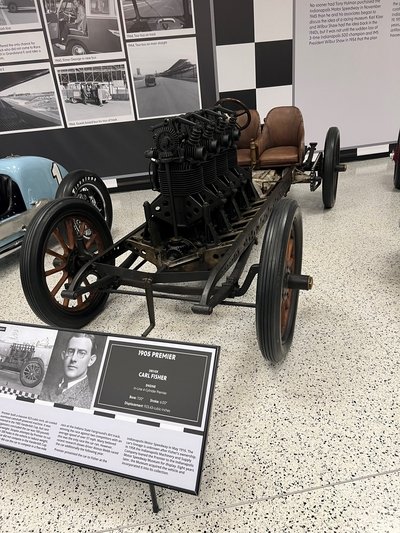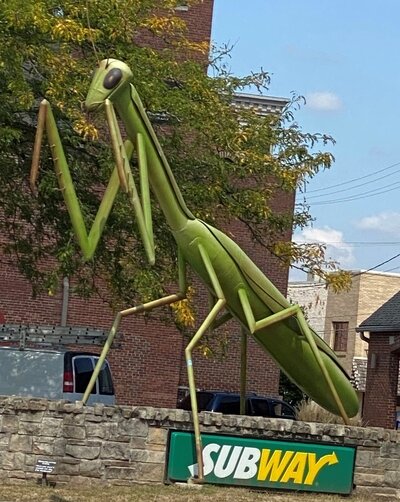SUMMER 2023

At 350,000 people, the Indy 500 has the largest attendance of any sporting event in the world. It gives you goose bumps when the Blue Angels roar over and the starter says, “Gentlemen start your engines!”
The history of the race and cars is fascinating. This 2-seater “Premier” was built in 1905. In the early days, drivers traveled with “riding mechanics,” who manually pumped oil and swiveled their heads constantly to check for oncoming traffic. There were no rear-view mirrors.
The first 500-mile race was in 1911 on a surface of crushed rock overlayed with 3.2 million paving bricks. In those days the running order was shown on scoreboards which had numbers hung on pegs. The four scoreboards were usually not in agreement.
The winning car in the first race had an average speed of 74.6 MPH. I can’t imagine what it must have been like going that fast on brick pavers. The drivers must have had to get their tooth fillings replaced after the race and probably lay in bed going bumpety bumpety for several nights.
In early cars, the gas tank was literally a tank mounted on the back. The hose coming out of the engine was the exhaust system.
In 1938, the track was paved and by 1968 the average speed had reached 150 MPH. Today, the average speeds are over 190 MPH, with qualifying laps over 235 MPH.
This car was an innovative design from 1964. The driver rode in the side car instead of behind the engine. It must have been strange to steer.
Early Indy racing was a macho sport. Deaths of drivers and fans were the norm, safety measures were for sissies. In 1973 there was a major crash that took the lives of several drivers, pit crew members, and fans. Those accidents forced the sport to recognize that sponsors weren’t going to spend millions on funerals. That year the size of the gas tanks was reduced from 75 to 40 gallons and the tanks were moved to the left side away from the grandstands. The height of the protective wall was increased and the track side box seats were removed. Various safety devices were added to protect the drivers. Many innovations from Indy cars are commonplace in vehicles we buy today.
The museum has a car you can get into to see what it feels like. It has a big sign saying not to get in if you will have difficulty getting out. I let Barb do the honors, I’d still be stuck in it.
Rock Rest Falls is a seasonal waterfall south of Columbus, Indiana. It isn’t easy to find, but it’s worth the effort. These smaller falls aren’t as impressive but they’re often much more scenic.
Lieber State Recreation Area is near Cloverdale which is another way of saying it’s in the middle of nowhere. Cataract Falls is the largest waterfall in Indiana measured by volume, reaching a peak of 4,000 cubic feet per second.
This is the upper section of Cataract Falls.
This is the lower section.
This covered bridge over the Eel River is near Cataract Falls. It was completed in 1876. It still carried vehicular traffic until 1988 when it was replaced by a concrete bridge.
Weenee World in Newcastle is an interesting place for lunch.
They love their signs.
We passed on the hand dipped pumpkin (yucko), but the ice cream was exceptionally good.
Zaharakos’ Ice Cream Parlor and Museum is on the main drag in Columbus, Indiana and has been open since 1900. They have quite a collection of antique soda fountains and player instruments. My favorite was the one banjo orchestra. Our quarters were well spent.
We have a mama and baby pileated woodpecker that have taken up residence in our yard. It seems like she’s about ready to tell junior to take care of himself.
Coco has learned to get her way by doing the doe eyes (she’s not the first female that’s gotten her way with me by doing this). How could you resist this look?
We hope all is well with everyone!
Peter Cober
















